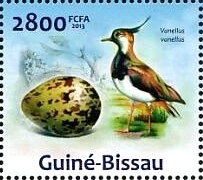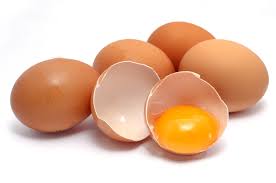Stamp: Northern Lapwing (Vanellus vanellus) (Guinea-Bissau 2013)
Northern Lapwing (Vanellus vanellus) (Guinea-Bissau 2013)
25 March (Guinea-Bissau ) within release Birds and their eggs (2013) goes into circulation Stamp Northern Lapwing (Vanellus vanellus) face value 2,800 West African CFA franc
| Stamp Northern Lapwing (Vanellus vanellus) in catalogues | |
|---|---|
| Michel: | Mi: GW 6613 |
Stamp is square format.
Stamp from souvenir sheet.Stamp Northern Lapwing (Vanellus vanellus) it reflects the thematic directions:
Animals are multicellular, eukaryotic organisms of the kingdom Animalia (also called Metazoa). All animals are motile, meaning they can move spontaneously and independently, at some point in their lives. Their body plan eventually becomes fixed as they develop, although some undergo a process of metamorphosis later on in their lives. All animals are heterotrophs: they must ingest other organisms or their products for sustenance.
Birds (Aves), a subgroup of Reptiles, are the last living examples of Dinosaurs. They are a group of endothermic vertebrates, characterised by feathers, toothless beaked jaws, the laying of hard-shelled eggs, a high metabolic rate, a four-chambered heart, and a strong yet lightweight skeleton. Birds live worldwide and range in size from the 5 cm (2 in) bee hummingbird to the 2.75 m (9 ft) ostrich. They rank as the class of tetrapods with the most living species, at approximately ten thousand, with more than half of these being passerines, sometimes known as perching birds. Birds are the closest living relatives of crocodilians.
Humans and their hominid relatives have consumed eggs for millions of years. The most widely consumed eggs are those of fowl, especially chickens. People in Southeast Asia began harvesting chicken eggs for food by 1500 BCE. Eggs of other birds, such as ducks and ostriches, are eaten regularly but much less commonly than those of chickens. People may also eat the eggs of reptiles, amphibians, and fish. Fish eggs consumed as food are known as roe or caviar.



